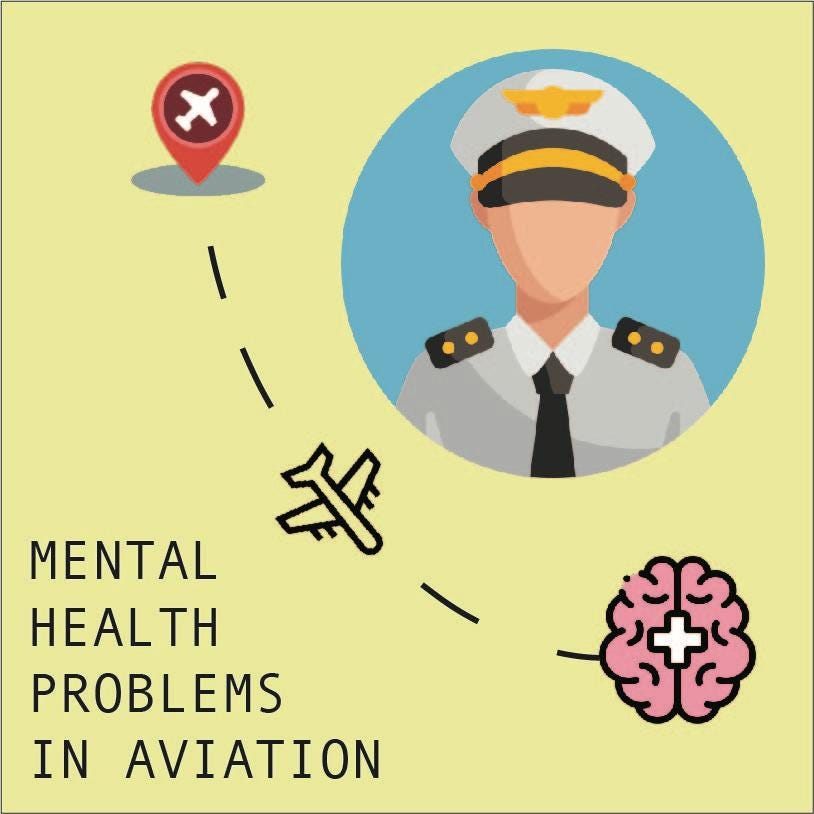Flight cancellations are low probability events, and are inherently difficult to predict. However, when flight cancellations do occur, the impact is substantial.
Tag: aviation
Mental Health Support in the Aviation Workplace
Mental health in aviation is a major concern among airlines, regulators, and passengers. This topic gained more attention after the 2015 Germanwings crash, which was deliberately caused by the plane’s copilot.
Why One should Know and Study Aviation Law?
The airline industry is widely impacted by regulations and restrictions related to international trade, tax policy, and competition. It’s also impacted by issues like war, terrorism, and the outbreak of diseases. The aviation industry also happens to be one of the most regulated industry along with finance, insurance and health care.
C7 Strategy for Enhancing Verbal Communication: Aviation
Verbal communication is a vital part of aviation operation, despite increased use of hand held and integrated data-link communication and computer interfaces that use non-verbal inputs. The verbal communication is not just between air traffic controllers and pilots, but between a complex team of players including ramp workers, ground-handlers, cabin crew, aerodrome operators, construction workers, airline staff, security, other specialists and members of the public.
Is Muscle Memory for Real?
Unlike octopuses, we don’t have brains in our limbs. So we can’t really “memorize” anything in our arms and legs. But it’s true that once you learn how to do something physical—whether it be riding a bike or swimming – it becomes easier and easier to do it without thinking. It sure feels like your muscles remembers how to do it. But the reality is that the activity is happening in our brains.
Why Spin and Recovery is mandatory in Military Aviation?
A spin is a yaw aggravated stall which results in rotation about the spin axis. The aircraft follows a steep, “corkscrew” like, downward path. Spins can be entered, either intentionally or unintentionally, from any flight attitude and at practically any airspeed. If a stalled aircraft is subjected to a sufficient yaw rate, it will enter a spin. The yaw can be induced by improper use of the rudder or can be a result of the wing drop characteristics of the aircraft in question. In a spin, both wings are in a stalled condition but one wing will be in a deeper stall than the other. The drag is greater on the more deeply stalled wing causing the aircraft to autorotate (yaw) toward that wing. Spins are characterised by high angle of attack, low airspeed and high rate of descent.
Chair Flying, Makes us Perfect
Chair flying is like poetry, it makes us wiser and better by continuing to reveal beauty and truth about flying.
Looking for Good Flight School…
Success of training is determined by a combination of mechanisms that influence how people process information, focus their attention, direct their efforts, and manage their affect during learning. Individual differences between trainees will always exist, focusing on how to increase motivation and promote learning orientation across trainees can provide a way to enhance learning, despite other individual differences. This is where flight Instructor steps in and plays the most vital role in the life of every trainee pilot.
Flight Instructor: Philosophical thought…
In this blog-post I am hoping to convey what you can expect if you have ambitions to become a Flight Instructor. Becoming a teacher and a mentor is not right for everyone, and I would only encourage you to venture down this path if you believe that you have a passion for teaching and sharing your knowledge with others.
Where does Outer Space begin?
The United Nations has historically accepted the Kármán line as the boundary of space. And while the U.S. government has been reticent to agree to a specific height, people who fly above an altitude of 60 miles (100 km) typically earn astronaut wings from the Federal Aviation Administration. Even the Ansari X-prize chose the Kármán line as the benchmark height required to win its $10 million prize, which was claimed when Burt Rutan’s SpaceShipOne became the first privately-built spacecraft to carry a crew back in 2004.









